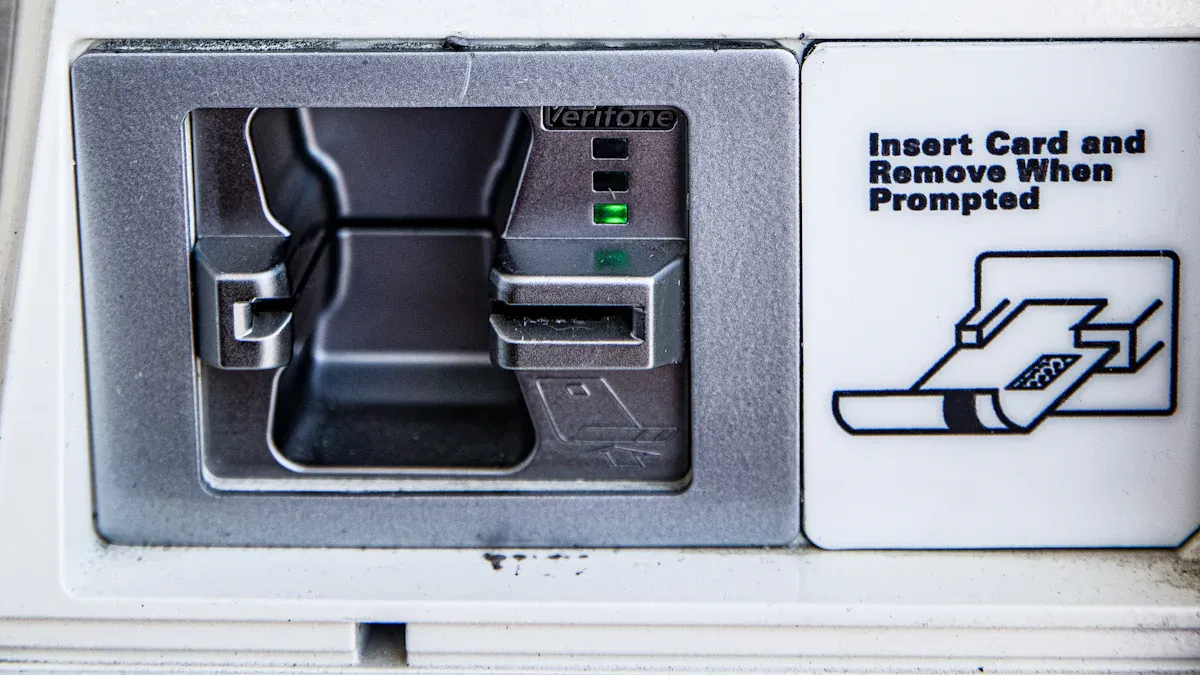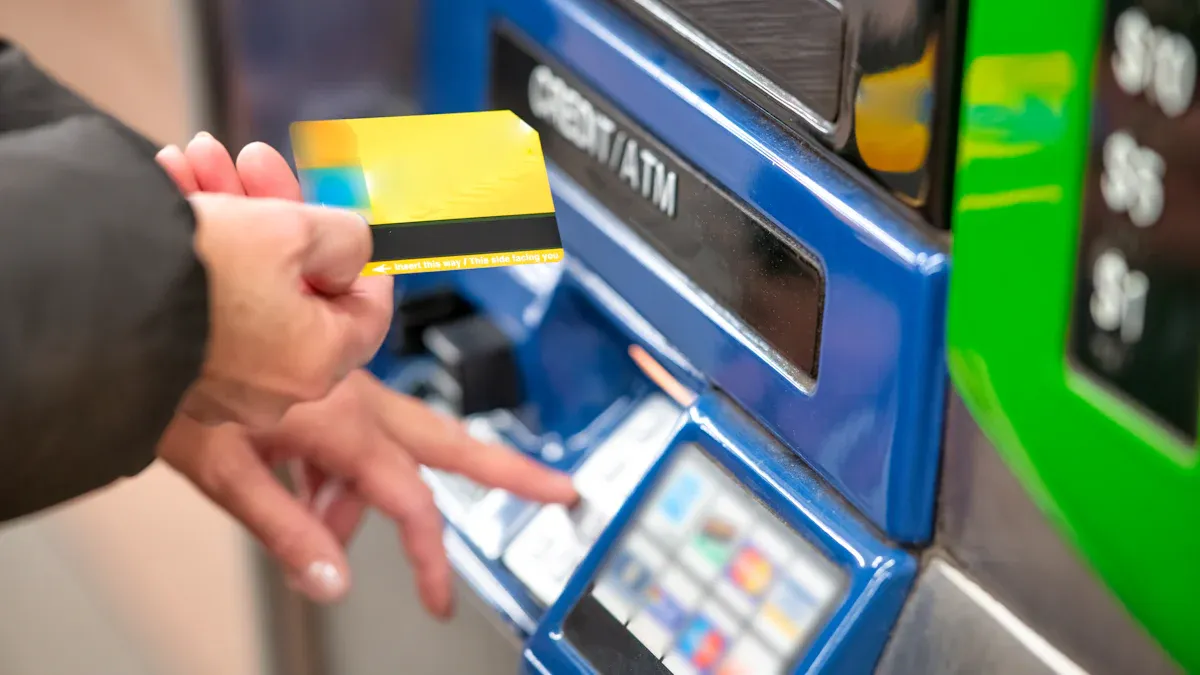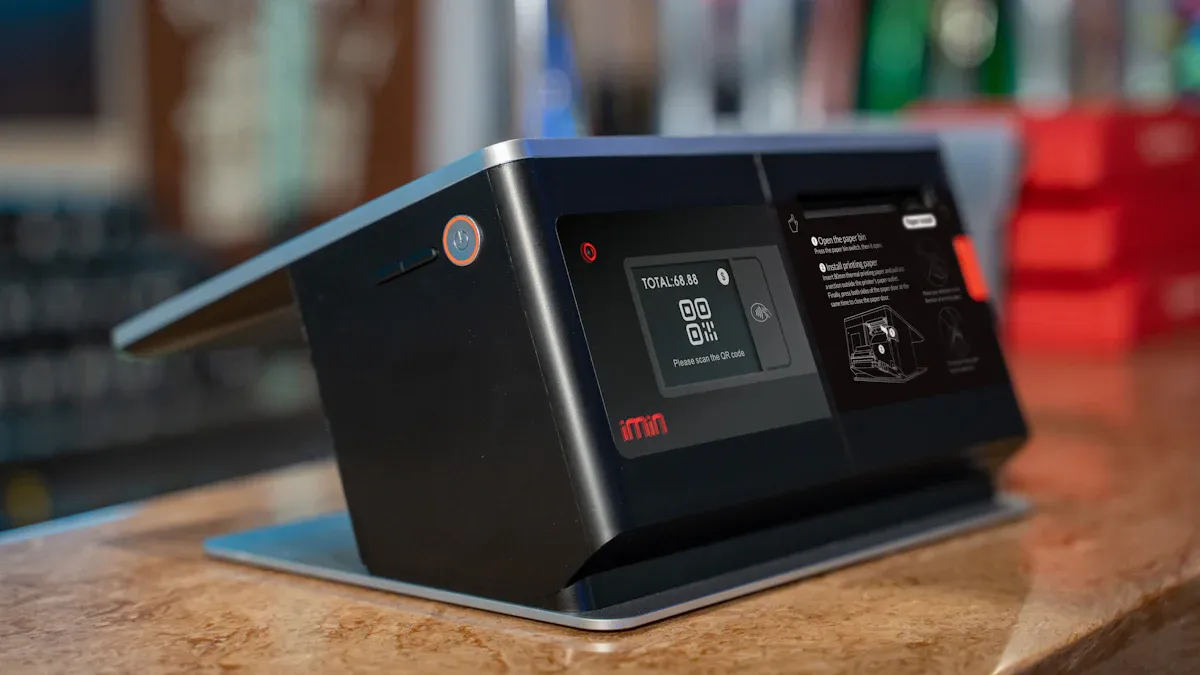How Credit Card Readers Transform Vending Machine Revenue

Vending machines equipped with credit card readers experience remarkable growth in revenue. A recent study found that machines using the Parlevel system sold 38% more units each month. Machines in San Antonio, Texas, saw average sales climb by 42% with Parlevel Pay. These numbers show how credit card readers meet the needs of today’s cashless shoppers and drive profits for operators.
Key Takeaways
Adding credit card readers to vending machines boosts sales by up to 40% by attracting more customers who prefer cashless payments.
Cashless payments increase the average purchase size, encouraging buyers to spend more per transaction.
Credit card readers speed up transactions and offer convenient payment options like mobile wallets, improving customer satisfaction.
Operators gain real-time sales data that helps them manage inventory better and make smarter business decisions.
Using credit card readers reduces cash handling, lowers theft risk, and saves time, making vending operations safer and more efficient.
Revenue Impact
Sales Growth
Vending operators see a clear increase in sales when they add credit card readers to their machines. Machines with these devices often report a 35% average revenue boost. In many cases, operators notice that machines equipped with card readers sell 38% more units compared to those that only accept cash. This growth happens because more people now expect to pay with cards or mobile wallets. Many customers do not carry cash, so they skip machines that do not offer cashless options. By meeting this demand, operators open their machines to a much larger group of buyers.
Tip: Operators who upgrade to cashless payment systems often see a quick return on investment due to higher sales volume.
Larger Transactions
Credit card readers do more than just increase the number of sales—they also raise the average amount spent per purchase. When customers use cash, they often limit their choices to the money they have on hand. With card payments, this limit disappears. A study from USA Technologies shows that the average transaction size for cash payments is about $1.15. When customers use credit or debit cards, the average jumps to $1.49 per transaction. This 30% increase means customers feel more comfortable buying multiple items or choosing higher-priced products.
Operators also benefit from the shift in consumer habits. Cashless vending sales have grown from about 15-16% to 25-27% of total sales in workplace markets. This trend shows that more people prefer the convenience of card payments, which leads to greater profitability for machines with credit card readers.
Credit Card Readers and Sales

Customer Appeal
Credit card readers attract a wider range of customers to vending machines. Many people today do not carry cash. They rely on cards or mobile wallets for daily purchases. When a vending machine accepts cards, it becomes more appealing to these customers. People feel more comfortable using machines that offer modern payment options.
Operators notice that machines with credit card readers draw in younger buyers. Students and professionals often prefer quick, cashless transactions. They expect the same convenience from vending machines as they get from stores and restaurants. Machines that do not accept cards may lose sales to competitors that do.
Note: Meeting customer expectations for payment options helps vending operators stay competitive in busy locations like schools, offices, and hospitals.
Cashless Effect
The shift to cashless payments changes how people use vending machines. Transactions become faster and easier. Customers can tap their card or phone and complete a purchase in seconds. This speed reduces wait times and encourages more people to use the machine.
Mobile payments like Apple Pay and Google Pay add another layer of convenience. People can buy snacks or drinks even if they forget their wallet. They only need their phone or smartwatch. This flexibility increases the number of potential buyers.
Benefits of cashless vending:
Faster transactions
Fewer abandoned purchases
Higher customer satisfaction
Credit card readers also help operators track sales trends. They can see which products sell best and adjust their inventory. This data-driven approach leads to better business decisions and higher profits.
Analytics

Sales Data
Credit card readers turn ordinary vending machines into smart devices. These machines collect real-time sales data every time a customer makes a purchase. Operators can access this information from a computer or mobile device. They see which products sell best and which ones do not move as quickly. This data helps operators make better business decisions.
Operators use sales data to spot trends. For example, they might notice that bottled water sells out faster than soda in certain locations. They can then adjust their product mix to match customer preferences. Real-time data also helps operators respond quickly to changes in demand. If a new snack becomes popular, they can stock more of it right away.
Tip: Real-time sales data reduces guesswork and helps operators maximize profits.
Inventory Optimization
Smart vending machines with credit card readers help operators manage inventory more efficiently. The system tracks every sale and updates inventory levels automatically. Operators know exactly when to restock each machine. This reduces the risk of running out of popular items.
Efficient inventory management saves time and money. Operators avoid unnecessary trips to check machines. They also reduce waste by stocking only what customers want. Some systems even send alerts when inventory runs low. This ensures that machines stay full and ready for customers.
Benefits of inventory optimization:
Fewer stockouts
Less product waste
Lower operating costs
Credit card readers provide the data needed to keep vending machines running smoothly. Operators who use these tools can grow their business and serve customers better.
Efficiency
Less Cash Handling
Vending operators who use credit card readers handle less cash every day. Direct bank deposits replace the need for frequent cash pickups. This change saves time and reduces labor costs. Operators no longer need to visit each machine as often to collect money. They can focus on other important tasks, such as restocking and customer service.
Fewer cash collections also mean fewer mistakes. Counting coins and bills can lead to errors. Digital payments record every sale automatically. Operators get clear records for each transaction. This makes accounting much easier and more accurate.
Tip: Streamlined accounting helps operators track profits and spot problems quickly.
Operators also see benefits in their daily routines. They spend less time sorting and transporting cash. This efficiency allows them to manage more machines with the same staff. Many operators report that they can expand their business without hiring extra workers.
Reduced Risk
Handling less cash lowers the risk of theft and loss. Machines with large amounts of cash can attract unwanted attention. Credit card readers reduce the amount of physical money inside each machine. This makes vending machines less tempting targets for thieves.
Direct deposits to the bank add another layer of security. Operators do not need to worry about lost or stolen cash during transport. Digital records provide proof of every sale. If a problem occurs, operators can check the data and resolve issues quickly.
Key benefits of reduced risk:
Lower chance of theft
Fewer losses from counting errors
Greater peace of mind for operators
Credit card readers help vending businesses run smoothly and safely. Operators who switch to cashless systems enjoy more control and less stress.
Real Results
Case Studies
Many vending operators have seen dramatic changes after installing credit card readers. For example, a vending company in Chicago upgraded 100 machines in local schools and offices. Within six months, the company reported a 45% increase in total revenue. The machines sold more snacks and drinks because more people could pay with cards or mobile wallets.
Another operator in Atlanta shared similar results. After adding credit card readers to machines in hospitals, the operator saw sales rise by 50%. Hospital staff and visitors often did not carry cash. The new payment option made it easy for them to buy what they needed at any time.
Note: Real-world examples show that cashless payment systems help vending businesses reach more customers and boost profits.
Industry Trends
Industry data supports these case studies. Recent surveys show that vending machines with cashless payment options earn 25% to 50% more revenue than machines that only accept cash. Many operators now choose to install credit card readers on all new machines. This trend continues to grow as more people use cards and mobile payments for everyday purchases.
A table below shows the average revenue increase after adding cashless payment options:
Location Type | Revenue Increase |
|---|---|
Schools | 35% |
Hospitals | 50% |
Offices | 40% |
Operators who follow these trends stay ahead of the competition. They meet the needs of modern consumers and keep their machines busy throughout the day.
📈 Industry experts predict that cashless vending will become the standard in the next few years.
Credit card readers help vending operators increase sales and reach more customers. Operators gain better data and improve efficiency with these devices. Many see a strong return on investment. The industry continues to move toward cashless vending. Operators who adopt credit card readers today prepare their business for the future.
Operators who invest in cashless technology stay ahead of the competition and meet customer needs.
FAQ
How do credit card readers affect vending machine maintenance?
Operators find that credit card readers require minimal extra maintenance. Most devices update automatically. If a problem occurs, support teams can often fix it remotely. This reduces downtime and keeps machines running smoothly.
Are credit card transactions secure on vending machines?
Yes. Credit card readers use encrypted connections to protect customer data. Payment processors follow strict security standards. Operators trust these systems to keep transactions safe.
What payment types do modern vending machines accept?
Most machines with card readers accept credit cards, debit cards, and mobile payments like Apple Pay or Google Pay. Some also support contactless cards. This flexibility meets the needs of many customers.
Do credit card readers increase operating costs?
Operators may pay small transaction fees for each sale. However, higher sales and fewer cash collections usually offset these costs. Many operators report a strong return on investment.
Can operators track sales in real time?
Yes. Credit card readers send sales data instantly to a secure dashboard. Operators check inventory, monitor trends, and make quick business decisions. This real-time insight helps maximize profits.
